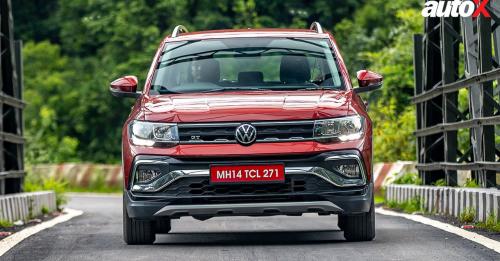
Of late, I’ve realised that I do have some trouble letting go of my long-term test cars. You see, I realised some time ago that I’m a man of habits. And this is not just in the sphere of cars but in pretty much everything about my everyday life – the pocket I keep my phone in, the zips on my bag have to be lined up in symmetry, and my car is always parked nose out. In short, I am a bit obsessive about things in life.
This obsessiveness also spills into the regular vehicle of my choice, when not testing other cars, obviously. And once I’ve gotten used to the ergonomics and driving characteristics of a certain vehicle, I prefer using it on a daily basis. Recently, something similar happened with the VW Tiguan, and interestingly, it happened sooner with the Tiguan than with other vehicles I’ve driven in the recent past. Why? Well, there are a few reasons for that.
Firstly, the Tiguan offers a terrific set of features and just the right size for every day and all-condition usage, especially for a person like me who travels on my own 95% of the time. The inherent ability of the SUV is amplified with its standard-fit all-wheel-drive system, which, paired with its punchy 2.0-litre turbodiesel engine and slick-shifting 7-speed dual-clutch gearbox, makes driving a breeze. In fact, given its torquey engine – 340Nm of torque from just 1.750rpm – the Tiguan has a relaxed feeling to it both during urban commutes and mile-munching on the highway.
And it was because of this easy torque availability that I always got terrific fuel efficiency from the Tiguan. With a heavy right foot, getting upwards of 11km/l in urban driving and over 13km/l on highways is quite commendable.
If there is one thing that I particularly like about the creature comforts of the Tiguan, it’s the terrific air-conditioning system. While it’s common to see German automobiles getting a lot of criticism for the performance of their air-conditioning systems in our brutal summer, things were different with the Tiguan, even with its jet-black upholstery and the massive panoramic roof. In everyday use, even in the peak of summer, the temperature dial on the climate control stayed at a solid 23 degrees and performed superbly.
The other attractions of the Tiguan include its terrific build quality, animation of the multimedia touchscreen – the icons become larger as your finger nears the screen – and wonderfully setup suspension, which not only gives the Tiguan excellent ride quality but also class-leading high-speed stability.
If I'd to gripe, I’d say that it’s the shoulder support in the front seats. For some reason, it always felt lacking to me – I think it’s because of narrowing design in the upper regions of the seat – and on long drives, my shoulders would always start hurting in the Tiguan.
But, other than that one small problem, I have to say that my time with the Tiguan was a revelation. And, having experienced it first-hand for an extended period, I finally understood why the high-speed stability of German cars is so highly desired. Sadly though, with the Tiguan now gone, it’s time to look for another long-term car to start my obsession with it all over again.
- LOGBOOK
When it came: June 2019
Current Odo reading: 34,900kms
Mileage this month: 2,055kms
Fuel efficiency: 12.5km/l
What’s good: Comfort, stability
What’s not: Front seats could be improved
Also read - Volkswagen Tiguan Long Term Report: June 2020























Write your Comment